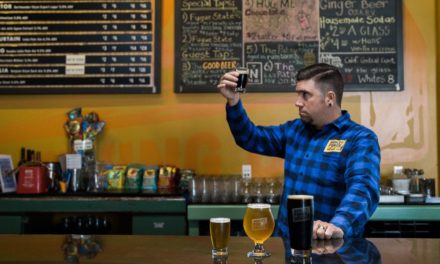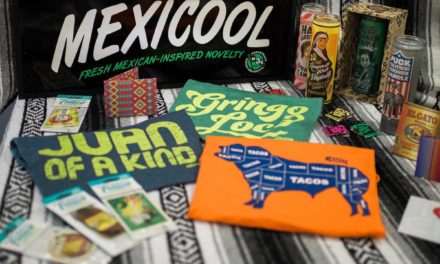
Living in this city in 2018 sometimes feels like “A Tale of Two Costa Mesas.”
There’s the first city, the original city, the city of years past. This version of the city is fueled by fond memories, cherished memorabilia, deep family roots and historical significance. It mattered, and matters, to lots of residents – it is home, after all. Yet it finds itself increasingly out-of-place in a relentlessly-modernizing Orange County.
The second city, the new city, is the Costa Mesa of opportunity and renewal. This version of the city sees the desirability of our location, our weather, our workforce, our large lots – with fresh, entrepreneurial eyes. It wants to build, it wants to optimize, it wants to make its mark. But it feels push-back from a community that’s happy to change and grow, just not too fast – and not in a way that paves all the “Costa Mesa” right out of town.
It can be a tricky thing to wade into this ebb and flow of Costa Mesa’s modernity versus history, newcomers versus old-timers, changers versus savers – and the new owner of Dick Church’s Restaurant, Bodie Rasmussen, has stepped right in it.
Eastside diner darling, Dick Church’s, has gone by many names over the years – Baby’s Beef Burger, Bud’s Drive-In, Art’s Coffee Shop – and having originally opened in 1947, it’s among Orange County’s oldest, continually-operated restaurants.
Exclusively serving breakfast and lunch daily, it’s the kind of retro, family-centric eatery that’s so “Costa Mesa” it seems almost sacrilegious to consider its denouement.
Fortunately, under its new ownership, Church’s will keep on kicking for the foreseeable future. Rasmussen – much like Baby, Bud, Art and Dick before him – plans to both continue operating as a restaurant and make his own mark on the place.
Diner Debut: New Owner, Bodie Rasmussen, at Dick Church’s Restaurant in Eastside Costa Mesa

Photo: Brandy Young
“Dick Church’s wasn’t even on the market and I wasn’t looking to own a diner,” began Rasmussen affably from a cozy corner booth the color of marmalade. “I was actually looking at some of the cool, industrial places in Costa Mesa to set up a coffee roasting operation.
“My real estate agent, Jen Carter – who is so awesome, by the way – she knows this area really well. She wrote a letter to George King, who owns a hydraulics company, to see if he wanted to sell his building over near South Coast Plaza. He got back to us and said, ‘No, not the hydraulics. But I will sell you my restaurant.’ I realized I could definitely somehow incorporate coffee roasting on a lot this large, so now I own a diner.”
It may be Rasmussen’s diner debut, but his experience with coffee and restauranteuring stretches all the way back to college.
“I grew up in Brea and then went up to University of Oregon for college,” said Rasmussen. “Eugene, Oregon was a kind of epicenter for coffee in the late 90’s. I spent four years in a coffee shop and remember having the idea that at some point, I’d like to start my own.”
After college, Rasmussen moved to Paris, France and got a job as a “taco and salad guy” in a tex-mex restaurant.
“The food was awful, just awful,” laughed Rasmussen. “Tex-mex is the one food the French can’t get right. I had zero culinary experience and they still hired me, so that should tell you something. But I have to say, it was the best experience of my life. Everyone was happy to be there. The manager did a really good job of creating a sense of community with the staff. It was like a family. Sad to say the food was too terrible and the restaurant has since gone out of business.”
Rasmussen planned to move back to the states and apply to law school, but an article about day-trading stocks caught his eye – and ended up changing his life.
“The article made it sound like anybody could day-trade and make a living,” said Rasmussen. “I was young so I was like, ‘Great. I’ll do this and save up some money for law school.’ Just my luck, the market was doing really well and before you know it, I’m a 26-year-old kid making way more money than I could have ever expected. Suddenly, I didn’t want to go to law school after all and decided to save up and seed my own company.”

Breakfast (Almost) As Usual: Rasmussen Plans to Make his Mark but Change Slowly



Photos: Brandy Young
That company ended up being a coffee shop in Tustin, opened in 2005, called The Lost Bean. (Rasmussen’s wife, Sarah Wallace Rasmussen, owns Christakis Greek Cuisine in the same shopping center.)
“The Lost Bean is more than a simple coffee shop for me,” said Rasmussen. “I wanted to build something according to my values, bring an element of community and charity to the coffee concept. It’s always been important to me that we focus on organic ingredients and the environment. I want to make viable businesses that also benefit the planet.”
In the early years of The Lost Bean, Rasmussen sourced his beans from an off-site coffee roaster. But he eventually tired of the arrangement and installed his own roaster in the back of the shop.
“We roast in small batches in a ten-pound roaster,” said Rasmussen. “That’s enough to roast our own beans – and do some wholesale roasting for friends’ businesses here and there – but we could be doing a lot more if we had the space.”
As excited as Rasmussen is to add a coffee-roasting facility to the Church’s large, corner property, he admits that step is likely “down the road a-ways.”
“With the diner, we’re taking it slow,” said Rasmussen. “This place has a lot of history and we respect that. I instantly recognized how special it was because of its regulars. The Lost Bean is also very much about community – we see the same regulars coming through and everybody knows each other – so I think this will be a great fit for us.”
One of Dick Church’s daily regulars, Lee Littrell, has been coming in for breakfast for over 25 years.
“There’s a lot of regulars who come here,” said Littrell. “We call it the ‘counter culture.’ It’s more like Cheers than Denny’s. It’s a lot of fun. I come in here every, single morning – and if I don’t, I really miss it. We did worry when we heard they got sold. All I can say is we’re glad it’s going to stay a restaurant.”

Above: Lee Litrell and the “Counter Culture” enjoy breakfast at Dick Church’s, Costa Mesa

Photo: Brandy Young
Just because Rasmussen plans to change slowly doesn’t mean he hasn’t already made changes.
“The first thing we did was change the coffee to our own, organic roast,” said Rasmussen. “We do bed-roasting which gives you just a really great cup of coffee. Places like Starbucks drum-roast for the time being – but I predict that in 15 years, everyone will be doing a bed-roast. It really is that much better.”
Other changes in the works include switching to hormone- and antibiotic-free eggs and milk, and “better quality ingredients in general.”
“Ultimately, we’d also like to build a back patio and some other updates,” said Rasmussen. “But I love the structure and the layout of the place, and that it’s been here since 1947. There aren’t too many independent diners left in Orange County.
“We plan to keep diner food on the menu, but we will probably be making changes to include other types of food. But I don’t want people to worry. We’re not going to be selling, like, $19 burritos with truffle oil drizzled on top. I want the restaurant to stay humble and accessible.”
As much as Rasmussen wants to bring his vision for the property to life, he also grapples with how to best navigate the transition.
“When I first bought the place, I had no idea,” said Rasmussen. “It was like, ‘Great, a restaurant, cool. There’s space out back for a roasting facility.’ But now that I’ve spent so much time at Dick Church’s, I have to admit I’ve sort of fallen in love with it.
“The staff is incredible. I love chatting with our regulars, they’re just a great group of people. I really do love everything about it. Does it need updating? Yes. Do I want to scrap the whole thing and turn it into something different? No.”

The purchase of Dick Church’s Restaurant isn’t Rasmussen’s only recent entrée into the Costa Mesa scene. He recently doubled-down on coffeeshops and opened a new location of The Lost Bean over at The Hive, The Chargers’ new training facility.
“The building is very cool,” said Rasmussen. You have The Chargers practice field in the front, and the training facility, and then office space and the old LA Times building out back. The vision for that area is going to be so awesome once it all comes together.”
According to Rasmussen, that sense of “cool” is just par for the course and to be expected in Costa Mesa.
“It’s pretty well-known that Costa Mesa is the coolest place in Orange County,” said Rasmussen. “This city has a kind of uniqueness that you don’t really find in a lot of other places around here.
“Santa Ana is trying to capitalize on some of that stuff, but they haven’t been able to do it in the way that Costa Mesa has. This city being the birthplace of action sports gives it an authentic credibility you can’t find anywhere else.
“I get the sense there are a lot of creative, independent people here. I just feel like they’ll appreciate a spruced-up, historic diner – and organic, bed-roasted coffee – as those things lend themselves to that blend of old and new here in Costa Mesa.
“I really look forward to getting to know this city, and the people, better. I’m very happy to be in Costa Mesa.” ♥




